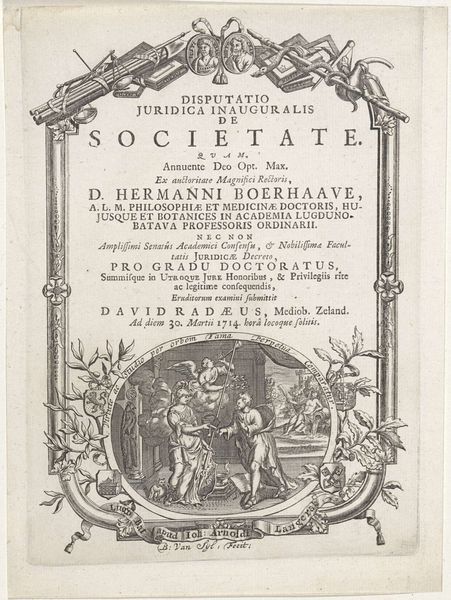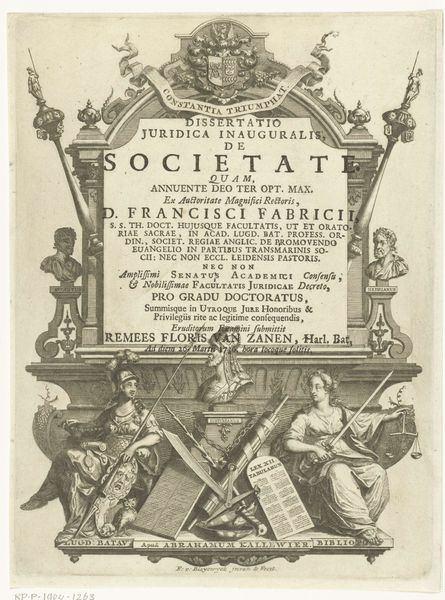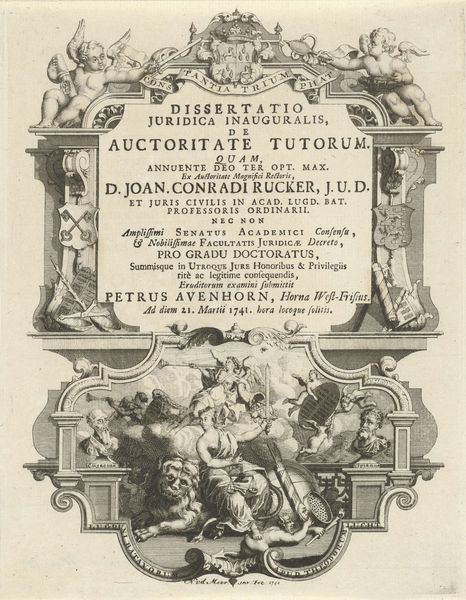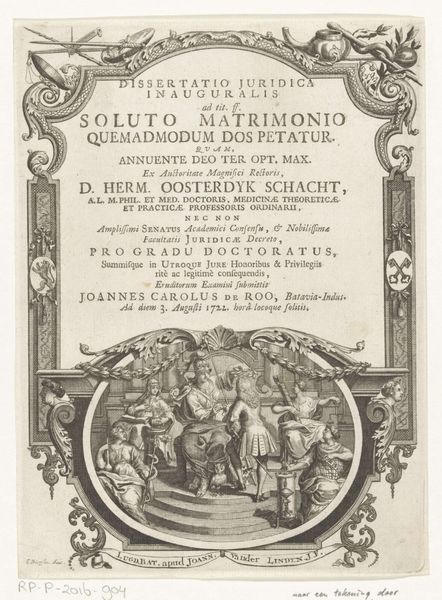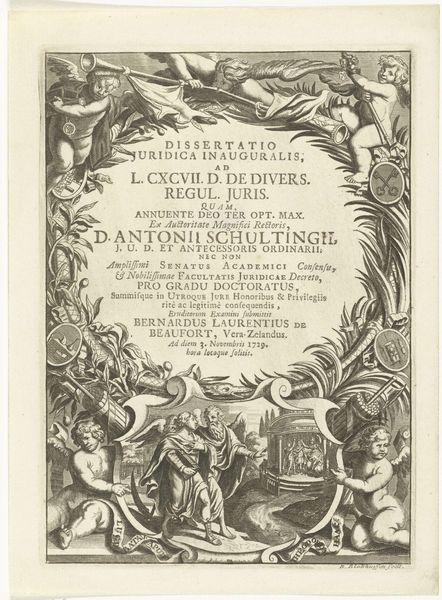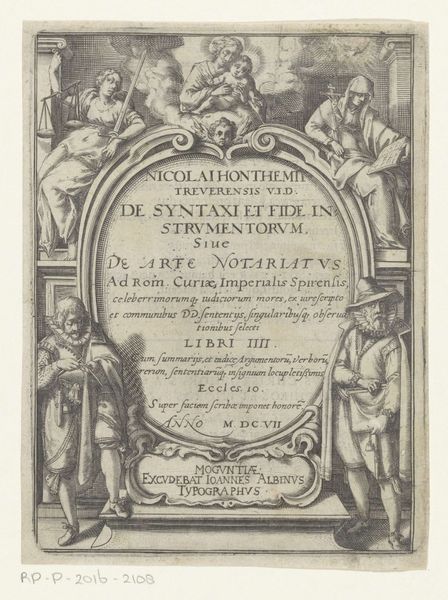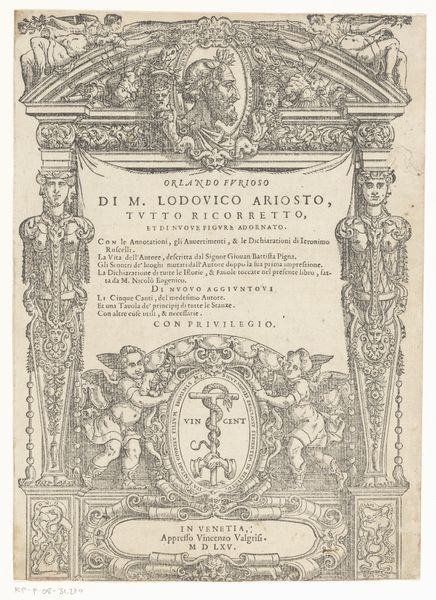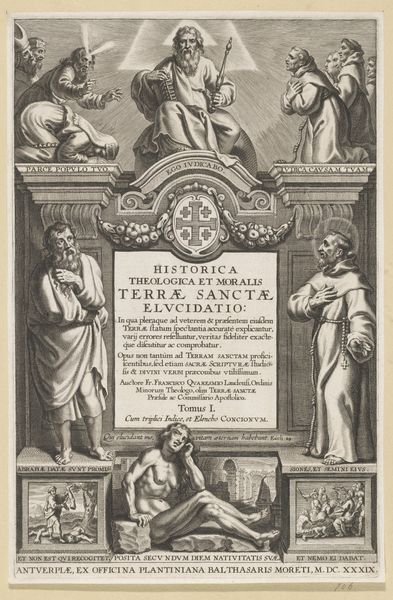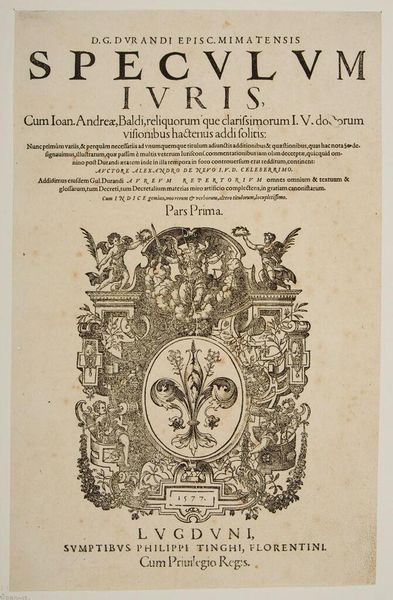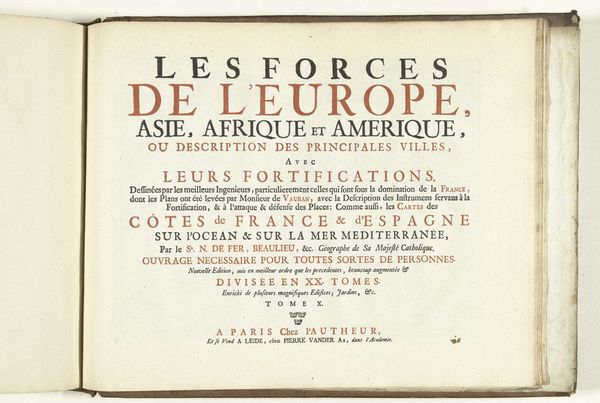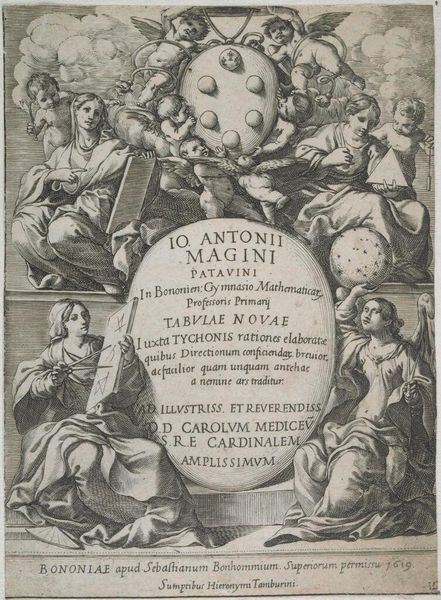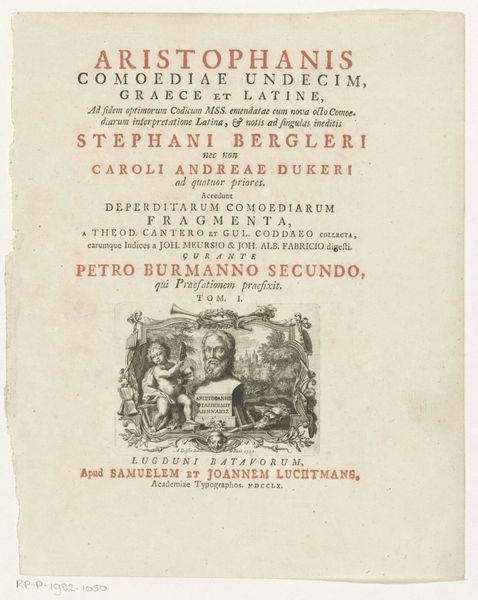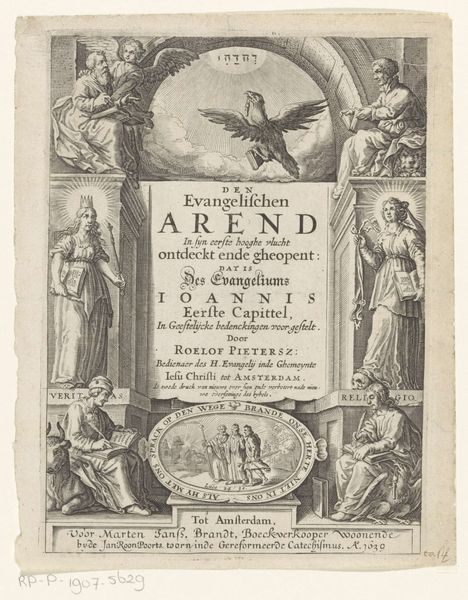
drawing, graphic-art, print, paper, ink, engraving
#
drawing
#
graphic-art
#
baroque
#
pen drawing
# print
#
book
#
old engraving style
#
paper
#
ink
#
engraving
Dimensions: height 202 mm, width 149 mm
Copyright: Rijks Museum: Open Domain
Curator: This elaborate engraving, dating to 1716, is titled "Drukkersmerk van Johan Arnold Langerak in sieromlijsting," or "Printer's Mark of Johan Arnold Langerak in Decorative Border." Editor: It's an eye-catcher, isn’t it? Immediately strikes me as both regal and…busy. Almost feels like they wanted to cram as much symbolism as possible onto one page. Curator: You're right; the Baroque period loved ornamentation. As a printer's mark, it was crucial for Langerak to signal his brand, values, and trustworthiness. We see imagery associated with legal and academic authority. Editor: Legal authority, that's exactly it. The central text block resembles an official document, very authoritative. But the bottom vignette... what's the story there? Curator: Ah, a visual allegory. It features a figure of Roma, helmeted, and bestowing a laurel wreath – recognition, honour – upon a kneeling man. Fame, symbolized by an angel, also joins. It encapsulates the ambition of academic pursuits. Editor: Clever way to elevate what is, essentially, an advertisement. It’s more than just ink on paper; it's an aspirational statement. The border, a mix of weaponry and laurel wreaths, adds to that sense of prestige, right? Curator: Absolutely. Those crossed quills and other academic objects signify intellectual labor, suggesting legitimacy. The printer is associating himself with these powerful images, imbuing his publications with their associated prestige. It also signals Langerak's allegiance to particular scholarly and cultural values. Editor: It's fascinating how a single print can communicate so much about the ambitions of the artist—and, in this case, the printer—and the cultural climate of the time. I see a powerful performance in this one image. Curator: Exactly. Looking closer at historical works like this one can provide a better grasp of past societies and beliefs than many textbooks combined. Editor: Yes, art is definitely always speaking, if you're willing to listen. It is all storytelling, ultimately.
Comments
No comments
Be the first to comment and join the conversation on the ultimate creative platform.
